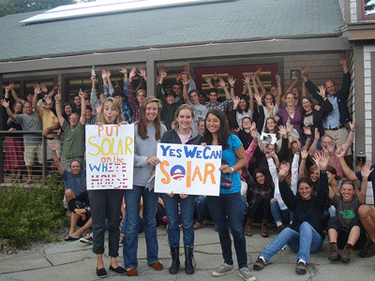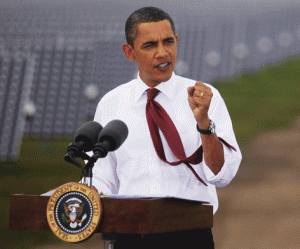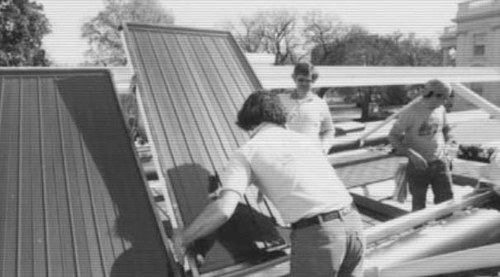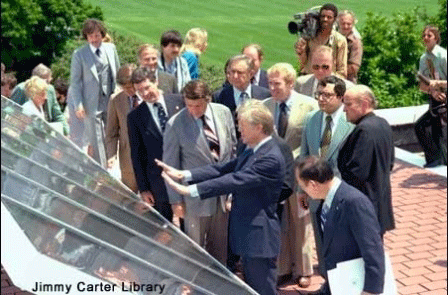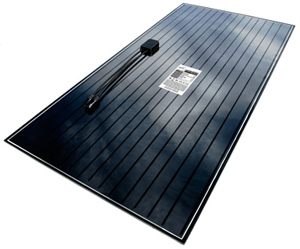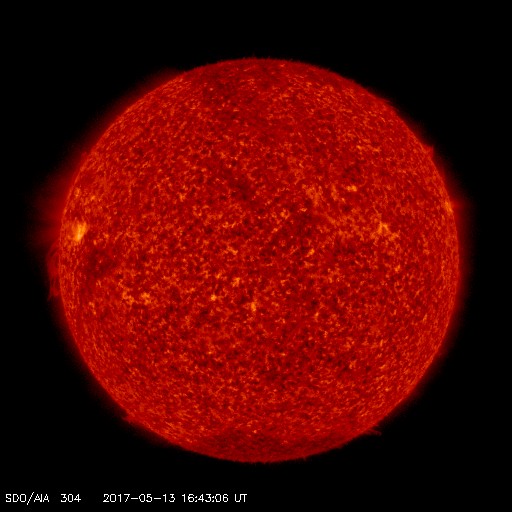
Energy Sec Steven Chu & CEQ Chair Nancy Sutley announcing White House plan to "go solar" (Photo: William Atkins, the George Washington University)
The Obama administration has announced plans to install solar panels on the White House. Secretary of Energy Steven Chu and Council of Environmental Quality Chair Nancy Sutley made the announcement this morning during a federally-sponsored GreenGov Symposium at George Washington University.
The White House solar array should be in place by next spring and will included both solar PV panels to generate electricity and a solar hot water heater on the White House Residence.
“By installing solar panels on arguably the most famous house in the country, his residence, the President is underscoring that commitment to lead and the promise and importance of renewable energy in the United States.”
- Council of Environmental Quality (CEQ) Chair, Nancy Sutley, 5 October 2010
The announcement comes after a two-year campaign by renewable energy advocates concerned about climate change, urging Obama to install solar power on the White House. Most recently, author Bill McKibben made the journey to the 1600 Pennsylvania Ave with a solar hot water panel that President Jimmy Carter had installed on the presidential roof in June 1979. (The White House was non-committal about accepting the panel at the time.) While solar PV panels were (quietly) installed during the George W. Bush years, they were placed on a maintenance shed — not on the mansion itself. When the PV panels go up in the spring, it will be the first time the White House itself will generate electricity from rooftop panels.
McKibben was exuberant about the news this morning. He called the panels “a powerful symbol to the whole nation about where the future lies,” adding that “the president will wake up every morning and make his toast by the power of the sun (do presidents make toast?), which will be a constant reminder to be pushing the Congress for the kind of comprehensive reform we need.”
McKibben is the author of The End of Nature, one of the first popular books about global warming, and founder of the international group, 350.
The announcement also drew praise from the solar power industry.
“Putting solar on the roof of the nation’s most important home is a powerful symbol calling on all Americans to rethink how we create energy,” said Rhone Resch, president of the Solar Energy Industries Association (SEIA) in a statement. “It’s an example of how each one of us can improve energy security, employ Americans and cut energy costs. I can speak from personal experience that taxpayers will benefit. In the four years since I’ve had solar on my house, I’ve gotten a better return on my solar system than on my 401(k).”
Like McKibben, Resch advocated solar power for the First Home on a visit there this year.
At a Rose Garden event commemorating Earth Day in April, Resch “point[ed] out to the President the large amount of available roof space on top of the White House, baking in the sun.”
At today’s announcement, Secretary Chu stressed the economic benefits of renewable energy.
“This project reflects President Obama’s strong commitment to U.S. leadership in solar energy and the jobs it will create here at home,” he said. “Deploying solar energy technologies across the country will help America lead the global economy for years to come.”
Chu was repeating a theme highlighted by the president in his weekly radio address last Saturday:
“Over the past twenty months, we’ve been fighting not just to create more jobs today, but to rebuild our economy on a stronger foundation. Our future as a nation depends on making sure that the jobs and industries of the 21st century take root here in America. And there is perhaps no industry with more potential to create jobs now – and growth in the coming years – than clean energy.”
Today’s announcement is the latest installment in a solar story set at the White House, a tale in which symbolism has usually conformed with reality.
President Jimmy Carter unveiled a bank of thirty-two solar hot water (thermal) collectors on the White House roof on June 20, 1979. The move was largely seen as a reaction to the first “oil shock” — when the price of gasoline skyrocketed and caused shortages and long lines at the pump.
George Szego, head of the company that installed the solar collectors, said in a 2006 interview, that “the collectors were cranking out hot water a mile a minute.”
The symbolism was matched by a large federal investment in solar R&D through the Solar Energy Research Institute (SERI), which was headed by Denis Hayes, the organizer of the first Earth Day. But when Ronald Reagan came into office, the solar panels came down — and funding of SERI was slashed.
“Reagan felt that the equipment was just a joke,” recalled Szego.
Solar power didn’t make a comeback at the White House until the summer of 2002 — and then the George W. Bush administration didn’t go public with the news and it wasn’t reported widely until 2003.
A 9 kW array of some 167 panels were placed on small building tucked away on the White House grounds.
In addition, two hot water systems were added — one on a maintenance shed and one on the White House cabana which sits next to the pool and spa.
The Washington Post, writing seven months after-the-fact, pointed out that to see the panels “you would have to climb to near the top of the adjacent Eisenhower Executive Office Building.”
Now, comes the Obama administration’s announcement, with solar rooftop installations at an all-time high.
Writing in his EnergyBlog this morning, Steven Chu made it clear that the new solar array is meant to be seen — by the widest possible audience:
“Around the world, the White House is a symbol of freedom and democracy. It should also be a symbol of America’s commitment to a clean energy future.”
For information on rebates and incentives for solar and other renewable energy installations, see here.
Filed under: All,CO2,Fossil fuels,Renewables,Solar
Trackback Uri
